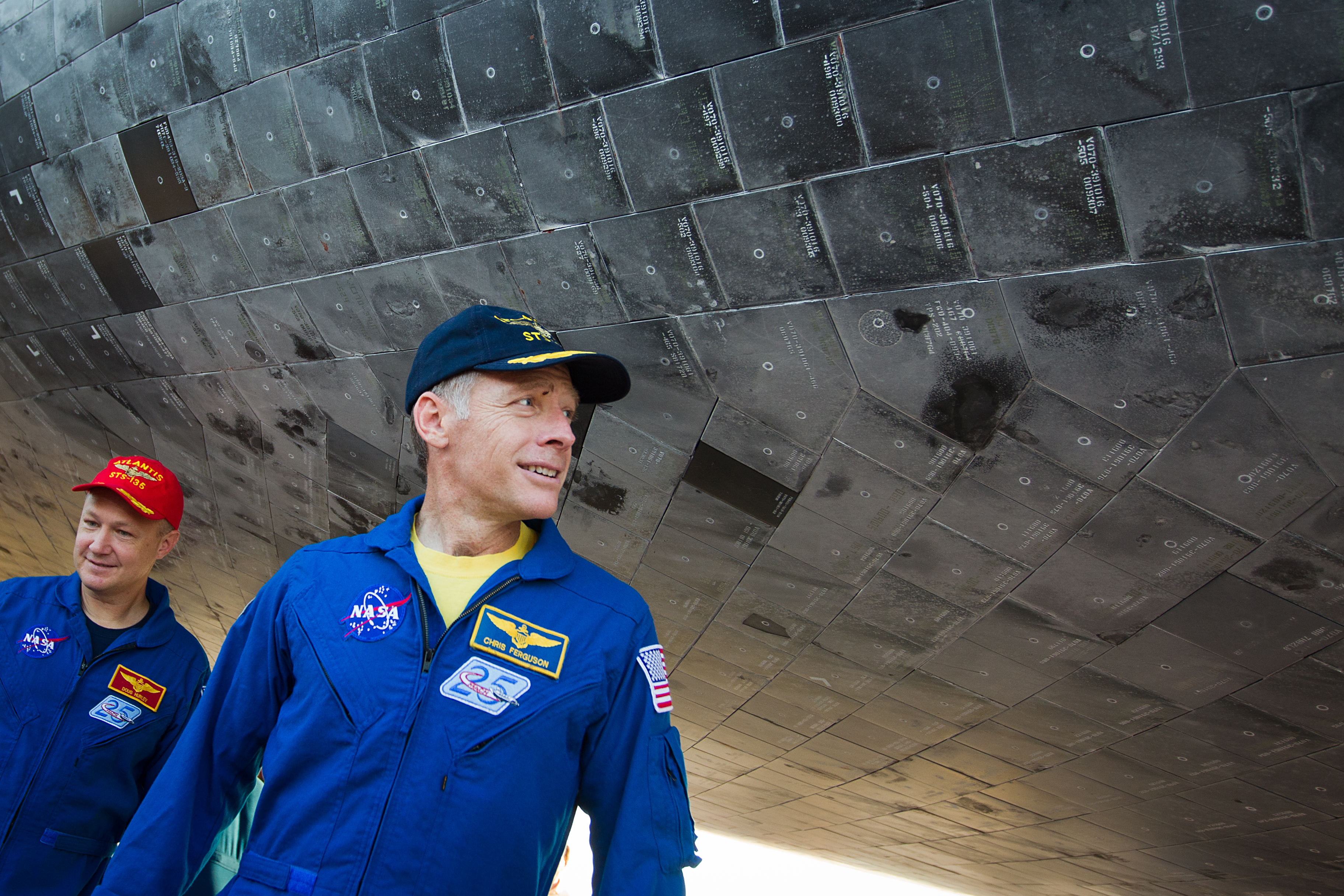“We were interested in looking at the more durable systems,” Camarda told Ars. “The first thing I ever tested was actually an all-metallic shuttle wing leading edge, and it used heat pipes, and it was built by McDonnell Douglas. It was a competitor with the reinforced carbon-carbon, the passive leading edge system.”
Ultimately, NASA went with the reinforced carbon-carbon heat shield for the leading edges of the shuttle’s wings and nose cap, while the belly of the shuttle was shielded by ceramic tiles. It was one of these reinforced carbon-carbon panels that broke on the space shuttle Columbia when it was hit by a piece of foam from the shuttle’s external fuel tank during launch in January 2003. The damage was undetected until the shuttle broke apart during reentry 16 days later, killing all seven astronauts onboard.
Camarda flew as a mission specialist on the next shuttle flight in 2005 after NASA developed techniques to repair a damaged heat shield in space.
“I did a lot of very early on radiant heating tests and hypersonic wind tunnel tests of this all-metallic wing leading edge, and it would basically take the heat from the lower surface and basically pump it up to the upper surface, so the entire wing leading edge would glow almost at the same temperature because it was such an effective two-phase heat transfer,” Camarda said.
Camarda’s work in the thermal structures branch at NASA’s Langley Research Center was limited to ground testing in high-temperature wind tunnels. His designs never flew on the space shuttle.
“When I saw [SpaceX] was testing different kinds of metallic heat shields, the guys… in my old branch, were all saying, ‘Wow, this is phenomenal! We wish we were young again and NASA was this vivacious, you know?’ But unfortunately, we didn’t get to see it.”
Camarda said NASA’s approach to testing is a lot different from the way SpaceX handles things.

NASA astronaut Chris Ferguson, STS-135 commander, right, and pilot Doug Hurley, left, examine the thermal tiles of the orbiter after the space shuttle Atlantis landed at the Kennedy Space Center in Florida, completing STS-135, the final mission of the NASA shuttle program, on Thursday, July 21, 2011.
Credit:
Smiley N. Pool/Houston Chronicle via Getty Images
“It’s amazing what these guys are doing, and they’re doing it so rapidly, and they’re testing a lot of things all at once,” Camarda said. “I almost wonder if that’s a smart thing to do. He’s failing large. Is his vehicle that inexpensive that he could use it as a hypersonic flight test? Is it so inexpensive that he could afford to do that?
“At a research center, we had such limited budgets that we had to scrimp and save every little thing,” Camarda said. “So, we would take a building block approach, and never be so bold as to do this very large test with multiple hundreds of changes. It’s crazy.”
The elephant in the room
SpaceX has blamed Starship’s setbacks this year on fuel leaks and an engine malfunction. Apart from the program’s in-flight failures, another Starship exploded during a ground test in June when a nitrogen tank failed.
Elon Musk didn’t mention any of this when he appeared for roughly 20 minutes on SpaceX’s live webcast Monday. Musk originally planned to provide a “technical update” on the X Spaces platform Sunday. In this format, Musk presumably could have answered questions from members of the space press corps and space enthusiasts hungry for details not just on the promise of a rocket as potentially revolutionary as Starship, but the obstacles SpaceX must overcome to make it a reality.
But SpaceX canceled the event without explanation. Instead, Musk appeared on SpaceX’s official prelaunch livestream. Most of the discussion centered not on detailed technical updates, but on familiar Musk talking points: making humanity a multi-planet species, and why a rocket like Starship is necessary to make it happen.
After the heat shield, one of the next big test objectives for the Starship program will be in-orbit refueling. This is a crucial prerequisite for any Starship flights that travel into deep space. SpaceX’s gigantic rocket is designed to haul up to 150 metric tons of payload into low-Earth orbit, but it can’t go any farther without a recharge of its cryogenic propellant tanks.





